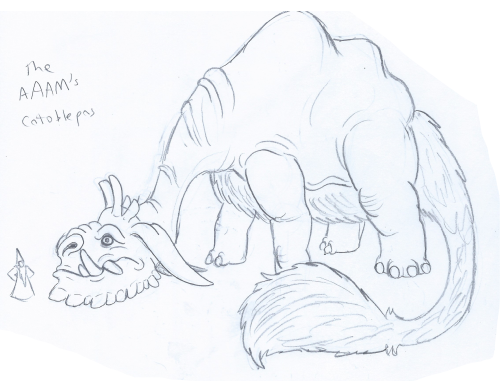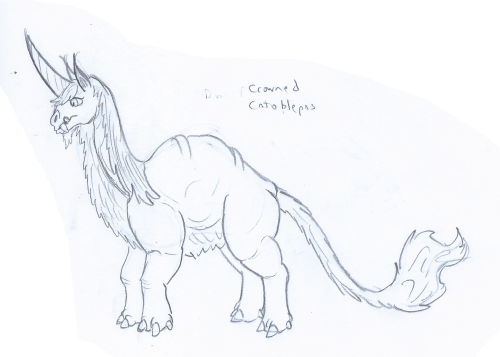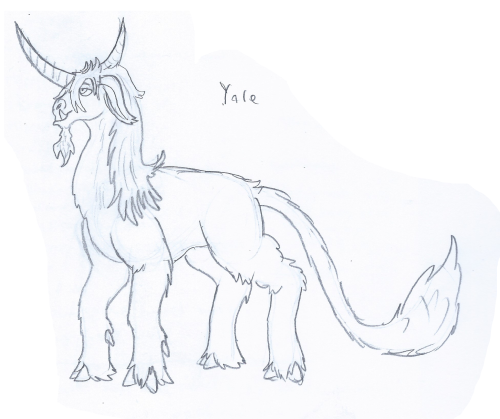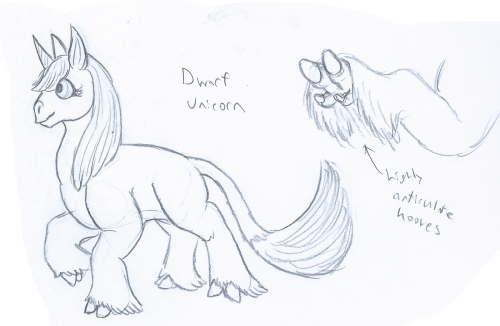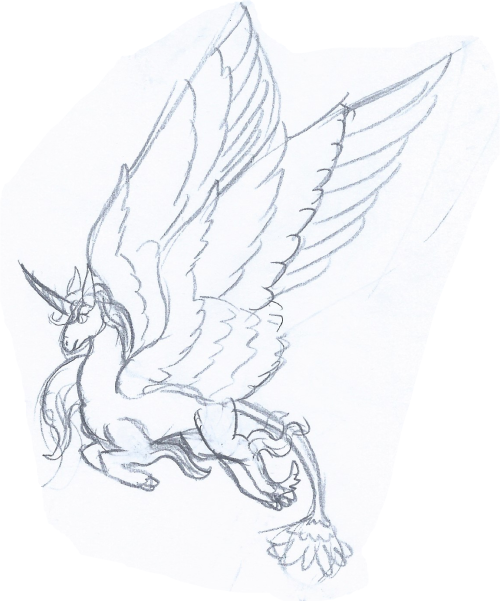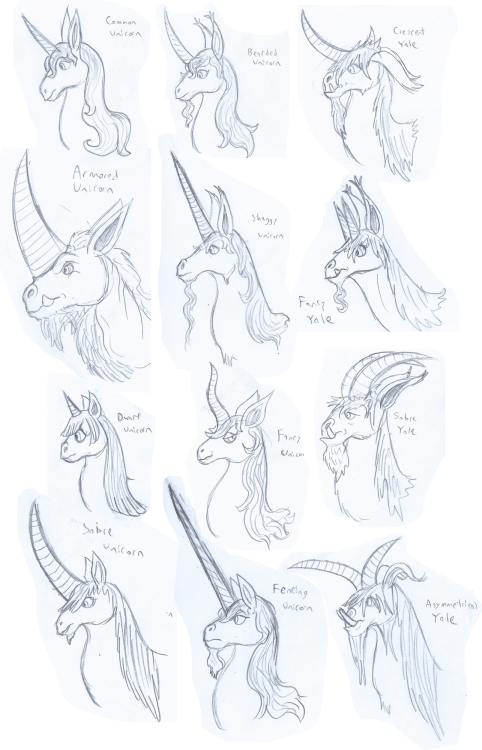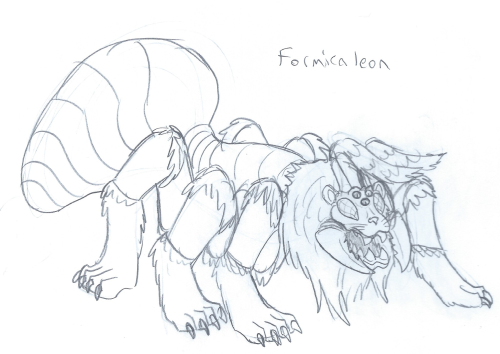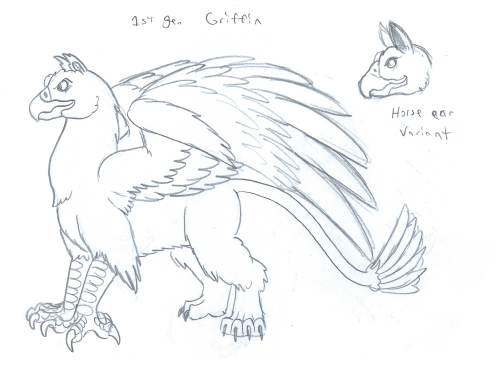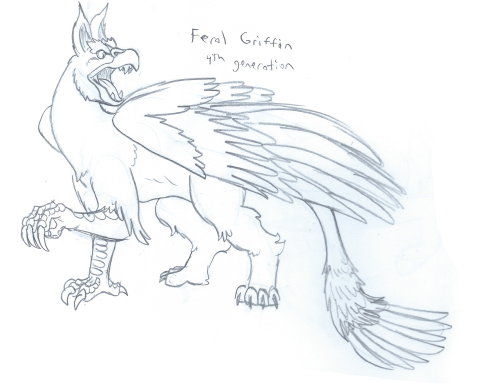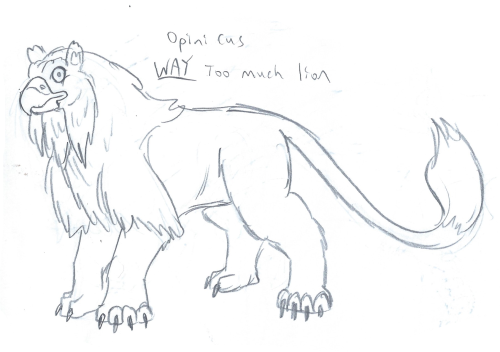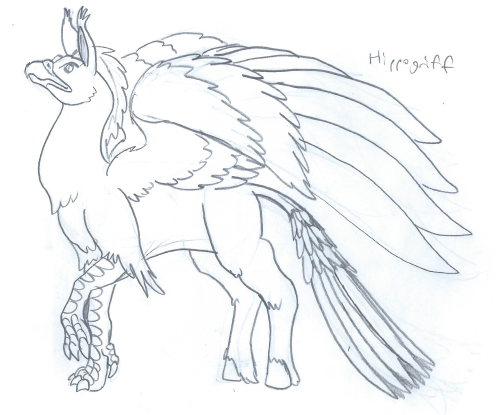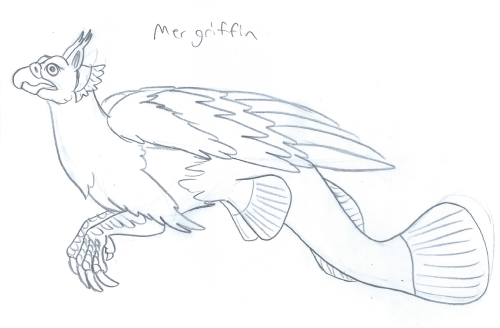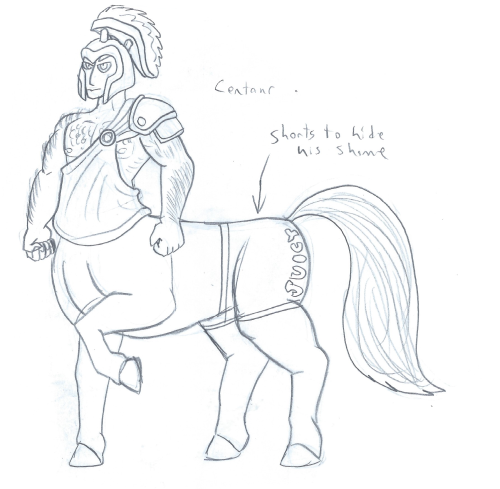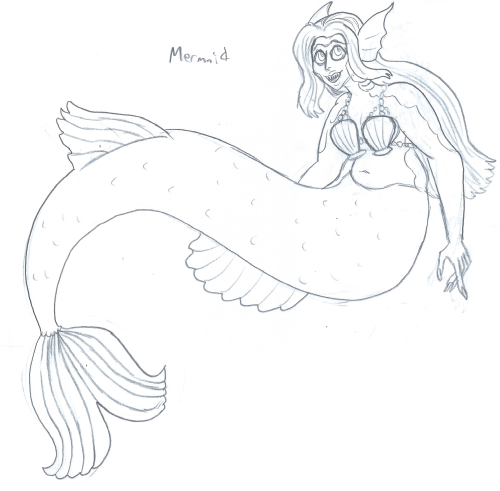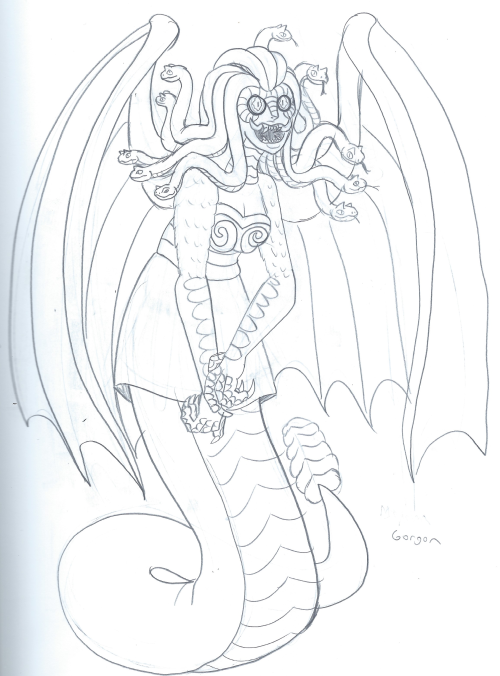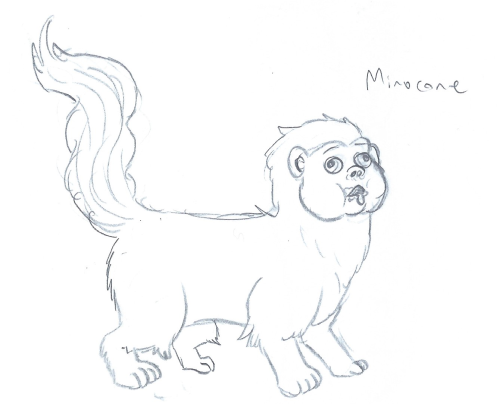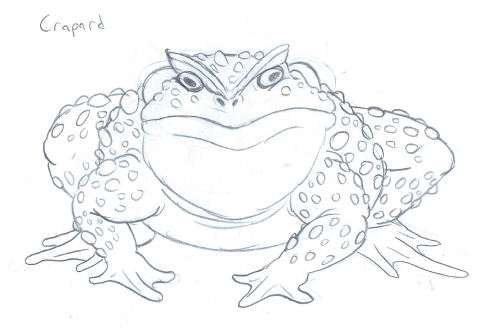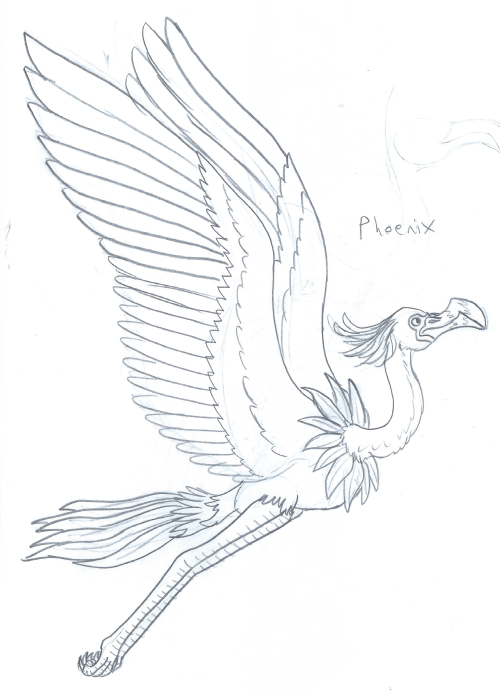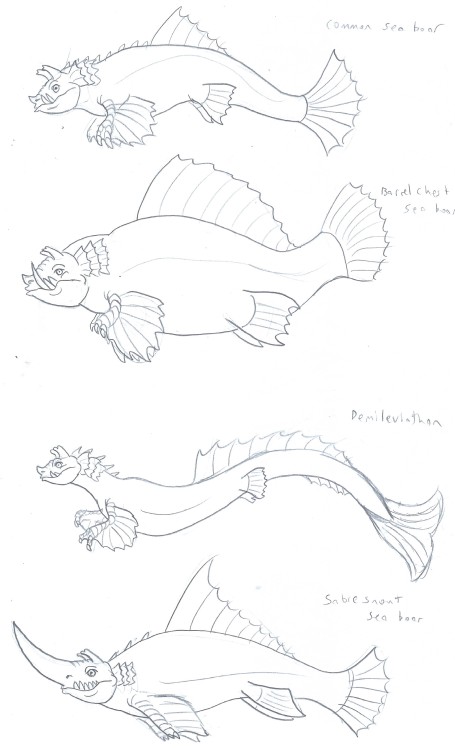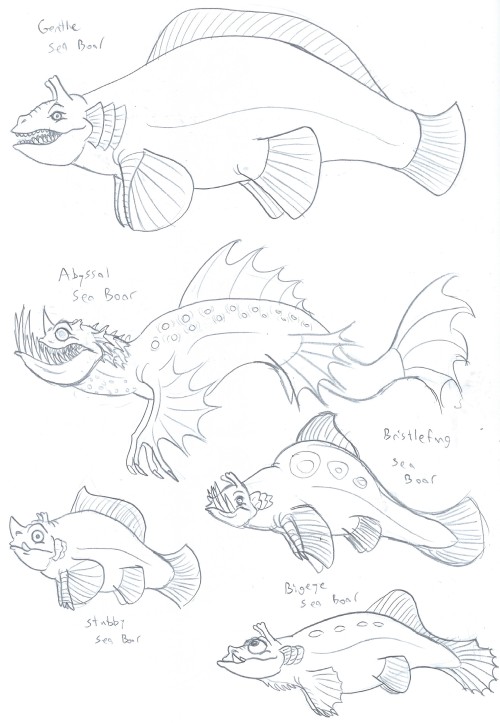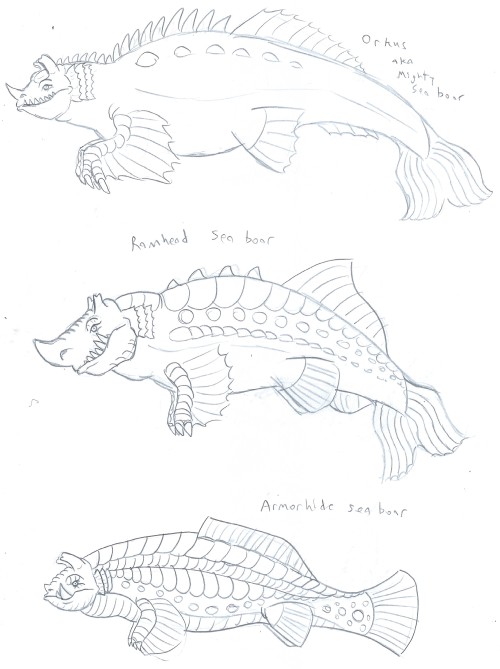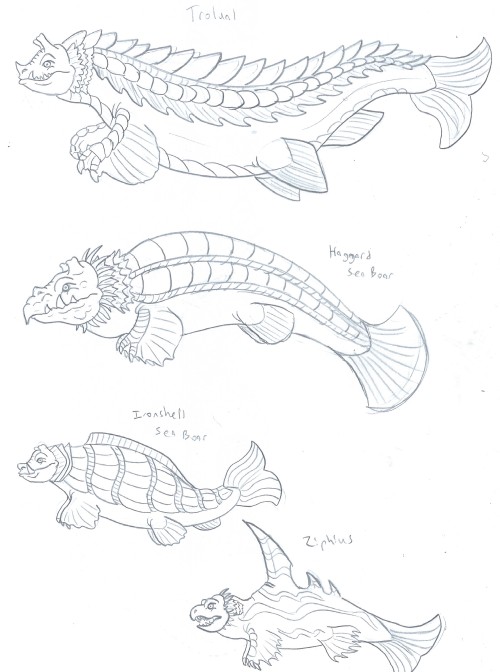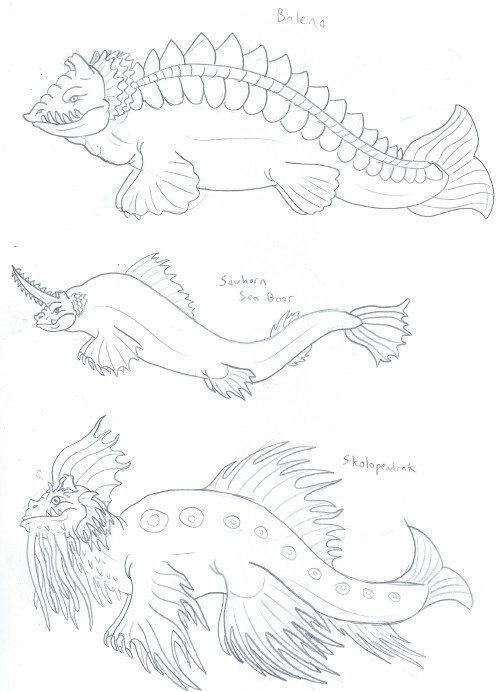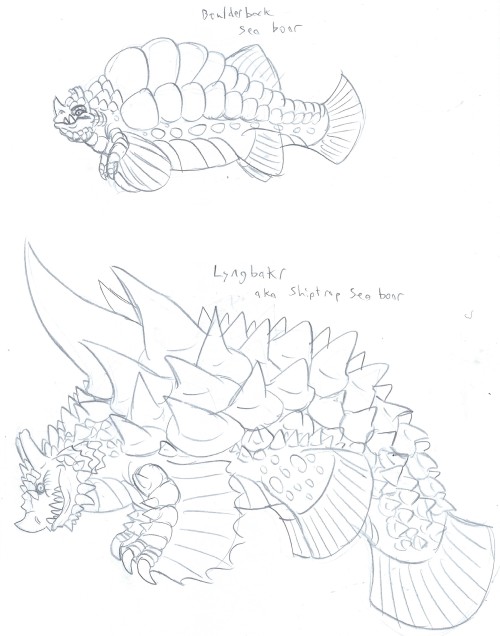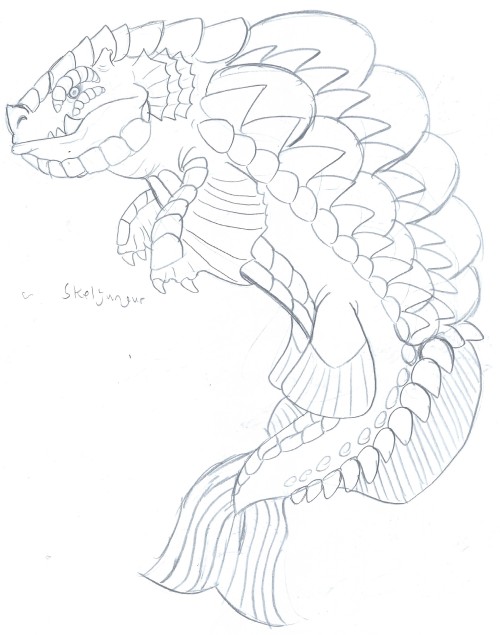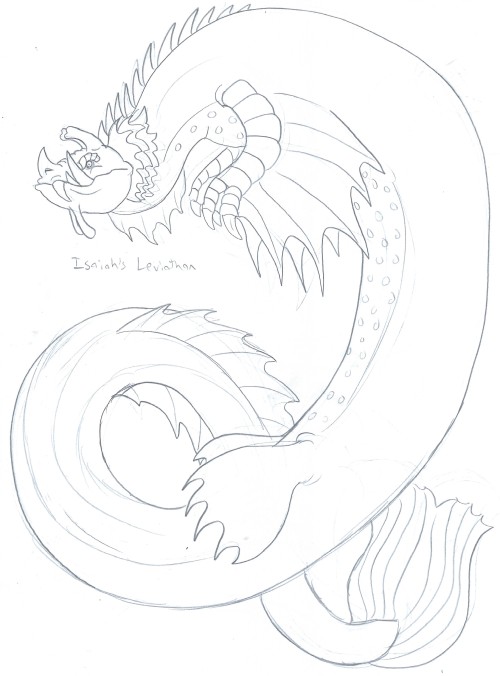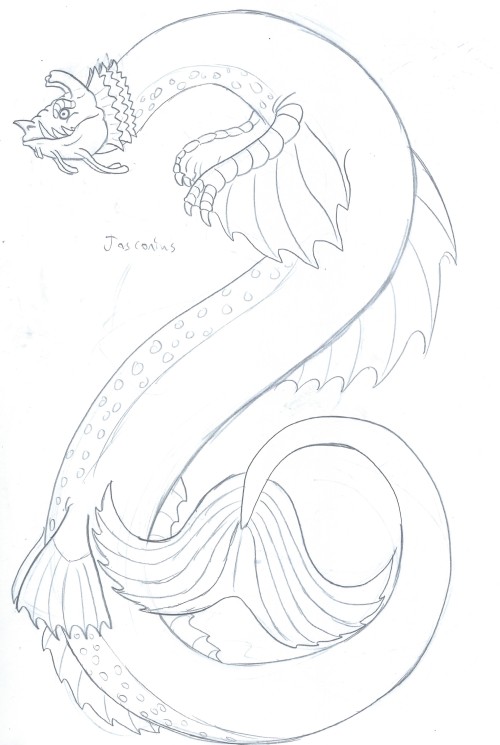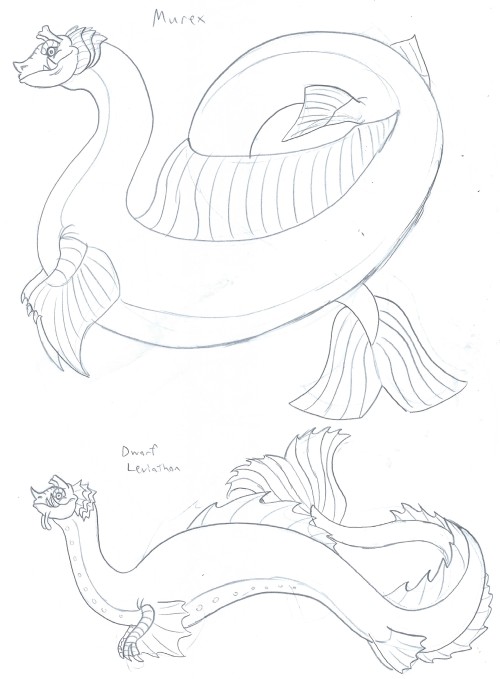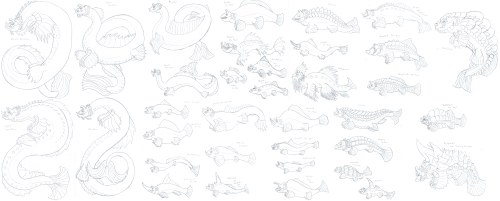#medieval bestiaries
Drew some weird horses today.
The Wild Catoblepas: one of the smallest species of behemoth on Midgaheim, this omnivorous giant is nigh invulnerable to most conventional and magic forms of attack.
The Domesticated Catoblepas: After centuries of inbreeding by human wizards, domesticated catoblepases barely resemble their wild relatives. Their enlarged heads and weakened necks make them utterly reliant on humans for survival, and humans in turn harvest the valuable alicorn that makes up their horns, as well as their armored skin and magic-resistant wool.
The Crowned Catoblepas: the smallest species of behemoth on Midgaheim, this elephant-sized mammal is still more than capable of trampling a human to death without breaking a sweat, though it’s more likely to gore them with its enormous alicorn horn.
The Armored Unicorn: a rare variety of unicorn, this heavily armored mammal is larger than a mundane oxen and even more cantankerous.
The Yale: aka the centicore or false unicorn, this beast’s two alicorn horns are somewhat articulate, able to twist around in their sockets.
The (Un)Common Unicorn: despite common descriptions, this beast more resembles a deer than a horse, though neither are really its close kin. Intensely magical despite their small size, these creatures are much sought after for their miraculous powers and incredible beauty. Whether they are truly scarce in number or simply extremely good at avoiding humans is a matter of some debate.
The Dwarf Unicorn: not much larger than a domesticated goat, this unicorn’s small size is deceiving, as it is no less magical than its larger brethren. Intensely intelligent and curious by nature, this unicorn’s front hooves have special digits to allow them to work as grasping appendages, which these unicorns have often used to pick the pockets of unaware humans. They are sometimes erroneously called “fairy unicorns” despite not hailing from Fairyland.
The Pegasus: a chimera made of horse and bird components (generally eagle), these creatures have often been bred for use as flying mounts, despite their intensely aggressive natures.
The Pegacorn: even though pegasi are already extremely ill-tempered and prone to throwing riders to their deaths when incensed, some humans decided they weren’t special enough and decided to make the same chimera with a unicorn in place of the horse. The resulting mix is an extremely dangerous creature, as the high magic power and inherent shyness of the unicorn is combined with the aggressive territoriality of the bird, resulting in a horribly powerful beast that really doesn’t care for humans trying to ride on it.
Post link
Extrapolating from what I posted yesterday, I drew a bunch of unicorns and yales, because unicorns are a big fantasy creature and deserve at least a fraction of the attention I lavish on dragons and basilisks and whatnot.
Post link
A few more chimeras for you! And a cautionary tale:
Mermecoleon: an infamous failed chimera - in this case, the result of a wizard trying to combine two animals that are vastly different and not having the skill to properly meld them. Mermecoleons are spoken of often by those who make chimeras, a hard lesson in knowing your limits. Though the original mermecoleon was incapable of eating, subsequent attempts have occasionally produced ones that are cohesive enough to at least live long enough to reproduce, and they lay enough eggs to actually last a long while as an obnoxious pest before falling apart thanks to their own ill-made bodies.
Formicaleon: of course, the idea that something is impossible has never been a deterrent to wizards, and eventually one did figure out a way to hybridize ants and lions into a functional chimera. Formicaleons are formidable monsters, combining the tenacity and family dynamics of both species to create powerful and territorial hunters that are more than capable of defending a wizard’s tower with extreme ferocity.
Botched Chimeras: any chimera can become a hideous, misshapen abomination if the wizard making it is careless and/or unskilled enough. Most botched chimeras fall apart shortly after their creation, though some manage to cling to life until someone or something finally ends their freakish misery.
Post link
GRIFFINS!
The most common chimera on Midgaheim by a wide margin, griffins have been made so often that feral populations are enormous and, by this point, just as critical to the environment as the many “natural” arcane creatures. Combining a lion (the king of beasts) and an eagle (the king of birds) gives griffins an affinity for both earth and wind magic - and, like other beasts who are attuned to two opposing elements of magic, this makes griffins incredibly powerful. Add to this the fact that they are not particularly hard to make, griffins are in many respects an ideal chimera - one needn’t be a master to create one, and yet they produce marvelous results.
This, of course, has led SEVERAL wizards to make griffins over the years, and in time those griffins reproduced naturally, to the point that many environments in Midgaheim now have large griffin flocks as a vital part of their ecosystem. After a few generations of interbreeding, the lion and eagle features in griffins become less distinct, with “feral” griffins often looking a bit more monstrous/wild than their sleek forebears.
Of course, some wizards still get it wrong, with the most common mistake being the use of too little eagle in the mix, resulting in chimeras like the Opinicus(lion with an eagle’s head) or the Keythong(i.e. a wingless griffin).
Likewise, wizards who are more skilled with chimera-crafting have sometimes felt the need to mess with the griffin recipe. Substituting different felines and/or raptors is common, as is adding just a dash of horse to make griffins that are more inclined to serve as mounts. Some take it a step farther and add a LOT of horse, creating Hippogriffs, which trade some ferocity for a more amiable beast. Of course, not all these twists are successful, as the scarcity of Mergriffins can attest to.
Post link
Getting close to wrapping up my beasts of heraldry sketch project. Here are some human chimeras as approach the end, most of which will warrant a sketch series of their own down the line:
Centaurs: human/horse hybrid, with a very unique body plan, being basically half of a human being growing up from where the neck would be on a horse. With two sets of lungs, two hearts, and an enormous interconnected digestive system, they’re incredibly hardy chimeras.
Mermaid: human/fish hybrid, not to be confused with undines, which are fairy fish that imitate humans in form. Mermaids have beautiful singing voices and a penchant for dragging land dwelling animals to their deaths.
Harpy: one of MANY varieties of Arepyiai, the catch-all term for human/bird chimeras. Harpies are specifically a fusion of human and “garbage birds” - i.e. birds who have reputations for being annoying, dirty, or otherwise undesirable. Though often dim and boasting remarkably poor hygeine, most harpies are very loyal to those they consider friends and can make valuable allies or servants.
Gorgon: a complicated and dangerous chimera, there are many variations on the gorgon’s recipe, but a human and a venomous serpent must be involved for it to have the iconic ability to turn flesh to stone with its gaze. The original gorgons were a mix of human, basilisk, viper, dragon, eagle, and boar, though there are many other variations with different ingredients.
Melusine: a mixture of human and sea serpent, this chimera can actually hide its bestial side via illusion magic, though the glamour fades whenever it enters water.
Minocane: a spaniel with a human baby’s face. Real talk: I don’t know what European noble decided THIS was the monster he wanted on his family’s heraldry, that THIS is what needed to be on his flags, his royal seal, the shields and banners of all his knights, etc., but whoever he was, he was a bona fide freak. Truly unhinged. George R. R. Martin sat down and tried to think of what a true sicko would put on his heraldry and came up with a flayed man, and this proves he was a hack because the real fucking maniacs flew a goddamn minocane on their flag.
Post link
VERY close to the end of my list of heraldic beasts. Let’s go over this batch of misfits:
Crapard: a very large toad. Able to eat a horse whole large.
Emmet:an ant the size of a pony.
Bonnacon: a magical bovine. Some species breathe fire from their nostrils. Others expel it from, well, their other end.
Nebek: a strange trunked beast the size of a large hound. Omnivorous and voracious.
Lubolf: a magical hippo, and one of the most dangerous herbivores on Midgaheim.
Phoenix: arcane birds who are masters of fire, wind, and oddly enough, water magic. When a phoenix dies, its body combusts into magic flames that reforge its remains into an egg, which soon hatches into a new phoenix.
Phenex: aka the false phoenix, these birds sport the exact same magic powers as phoenixes, despite being distant relatives at best. It’s very confusing to the average human citizen of Midgaheim, who is likely only to read about these birds in bestiaries rather than seeing them in person - and made all the more confusing by a THIRD family of fire magic using birds, the aptly named Firebirds of Ruslovak, who also sport some similar powers as the phoenix and phenex. It is said Phenexes can be found on the continent to Midgaheim’s East, where they are known by a different name.
Cameleopard: a strange creature that, to the untrained eye, looks vaguely like a camel with a leopard’s coloration. Many have tried to make mounts of these strange, long-necked hooved animals, only to be bucked off to their doom thanks to the immense height of the beasts. They may have inspired the creation of the Questing Beast, a chimera that has many similarities to a cameleopard when they are poorly described by a person who has only heard of them from bestiaries.
Rukh: aka the kreutzet, the cornu, the hraesvelg, the bariuchne, or simply the very large eagle. There are several species of immense eagle around Midgaheim, with many names as well, but it seems bestiary writers have settled on rukh as the catch-all name, which is itself a loan word taken from the continent to Midgaheim’s South East.
Tytron: a goat with an extra pair of ram-like horns.
Post link
Sea Boars
Monstrous fish that swim the wide open oceans surrounding Midgaheim, sea boars are so named for their large tusks and distinctive upturned nostrils. Despite being purely aquatic creatures, most sea boars possess rudimentary lungs, with many even vocalizing with loud roars and bellows. Sea Boars are typically omnivorous, though there are some exceptions.
Short write ups below:
Post link
Leviathans
The most massive fish to roam the oceans surrounding Midgaheim, leviathans account for some of the most terrifying sea monsters known to man, matched and surpassed only by the largest of sea dragons. They are a sister clade to the sea boars, many of whom also make up the bulk of the leviathans’ diet (and are included in our fun little scale chart).
Isaiah’s Leviathan - largest of the leviathans, and perhaps the only sea monster that can give a full grown Midgar Guivre a fair fight.
Job’s Leviathan - second largest of the leviathans and the most vicious, this enormous fish has a voracious appetite and a territorial streak that drives it to be a remorseless killer.
Jonah’s Leviathan - though still a maneater by nature, this leviathan is docile enough to be trained to an extent, though they have never been fully domesticated.
Jasconius - more docile than its kin, this massive fish has been fully domesticated in the past, with some even being trained to escort human vessels. Jasconiuses can hibernate for decades at a time, to the point where their inert and curled up bodies can be mistaken for islands. Though they don’t actively prey on humans like other leviathans, the Jasconius is viciously territorial when presented with similarly sized sea monsters, which, combined with its otherwise ambivalent temperament, makes it an excellent protector for sailing ships.
Murex - the second smallest of the leviathans, this sharp-fanged fish is just as vicious as most of its kin, and has proven adept at tearing boars apart board by board to get at the tasty humans within.
Dwarf Leviathan - bred by wizards to be amiable, survive in freshwater, and grow to a more manageable size, this beast is to other leviathans what the catoblepas is to behemoths: the stunted, domesticated version of a monster that was originally a nigh-unstoppable force of nature. They do make excellent guardians, though, patrolling moats and lakes for their human masters and keeping them free of the many, MANY lake and river monsters that might otherwise roost there.
Been meaning to ask this: How exactly did somebody manage to tame a Leviathan, much less domesticate them?
Post link


